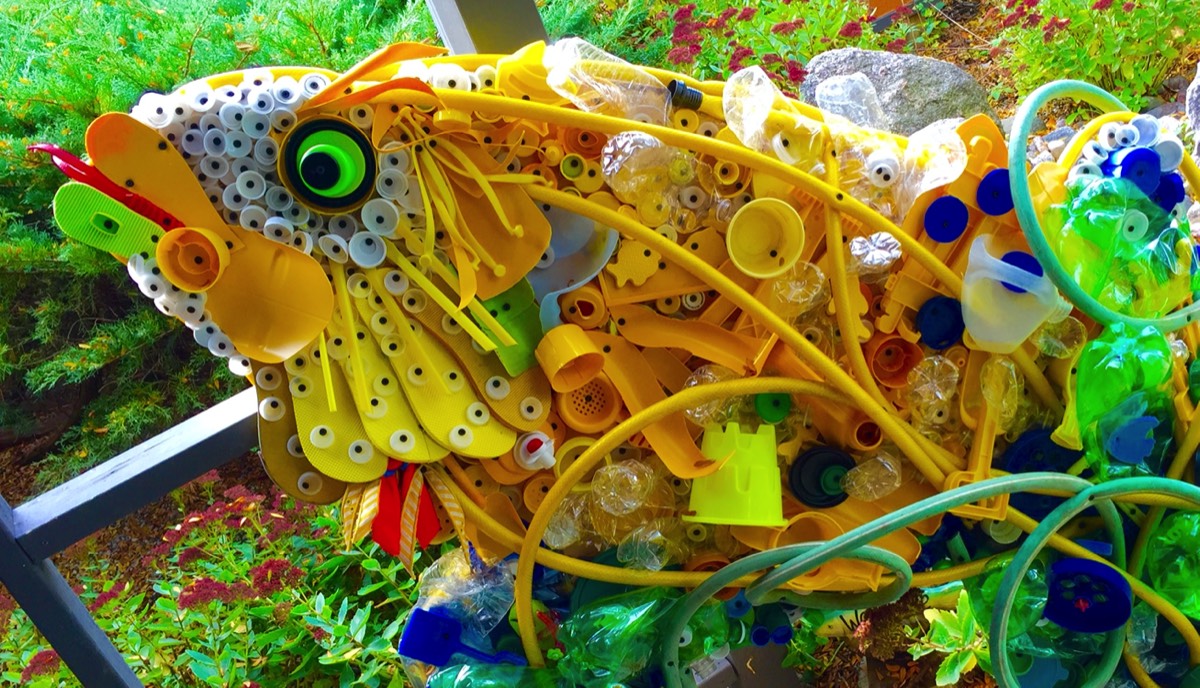Recycled Material Sculpture

Project Description:
The curriculum for 6-8th graders focuses on a portion of the elements and principles of design. The elements that are explored in class will help to create the backbone of student's middle school art experience. Line, value, color, texture and repetition are all investigated through the various projects completed in class. Students will develop observation and technical skills in drawing, painting, printmaking, sculpture, and various other art mediums.
LearningTargets:
The student will:
- Identify and create artwork based on the elements of art and on the principles of art.
- Demonstrate through their artwork how to use the elements of art to show movement and express feelings.
- Recognize, compare and use different media to create their artwork.
- Develop a respect and appreciation for the artwork of artists, including classmates' art.
- Recognize and compare differences in several art mediums.
- Create representational and abstract art.
- Learn to create proper shading and blending.
- Communicate thoughts, feelings and experiences to others through art.
- Understand terms that are basic to art media, procedures and techniques, as well as art appreciation.
- Maintain a sketchbook for a variety of drawing assignments to perfect their hand-eye ability and drawing skill.
Enduring Understandings:
6-8th Grade students will develop an understanding of how generating ideas and planning can lead to expressive creations. Students will also have a better understanding of how color theory influences artists. Artists will communicate meaning through the visual arts.
Essential Questions:
What is blending?
What is composition?
How do I draw a still life?
What are the elements and principles of design?
Rubric:
Rubrics have become popular with teachers as a means of communicating expectations for an assignment, providing focused feedback on works in progress, and grading final products. A rubric is a document that articulates the expectations for an assignment by listing the criteria, or what counts, and describing levels of quality from excellent to poor.
Rubrics are often used to grade student work but they can serve another, more important, role as well: Rubrics can teach as well as evaluate. When used as part of a formative, student-centered approach to assessment, rubrics have the potential to help students develop understanding and skill, as well as make dependable judgments about the quality of their own work. Students should be able to use rubrics in many of the same ways that teachers use them—to clarify the standards for a quality performance, and to guide ongoing feedback about progress toward those standards.
The rubric for the sculpture project can be viewed, downloaded and printed below. Enjoy
Artist: Miguel Rivera
From robots to race cars, Miguel Rivera’s creations prove that just because a hard drive has crashed doesn’t mean it is completely useless. Unsurprisingly, the artist found his inspiration in his day job as a systems administrator on an overseas U.S. Air Force base, where he came across ample broken hard drives and decided to do something with them. His first creation was a race car made from 33 hard drives. The body was mostly one whole drive, but the wheels took eight discs a piece. As he started making more and more designs, the creations became more and more complex until he created his most detailed creation to date: the massive robot he calls his masterpiece. The robot contains 14 whole laptop hard drives, pieces from 18 other drives, and a few other spare computer parts.


Project Example



Project Demonstration
Student Work










